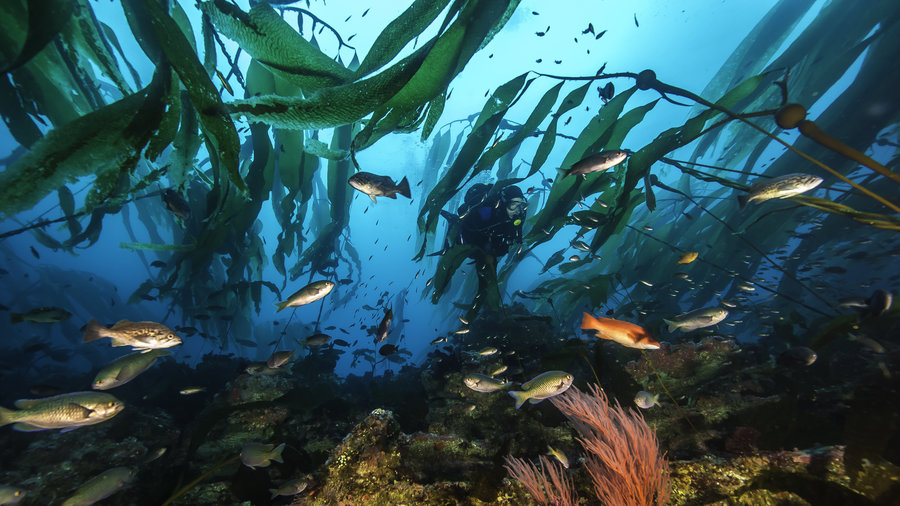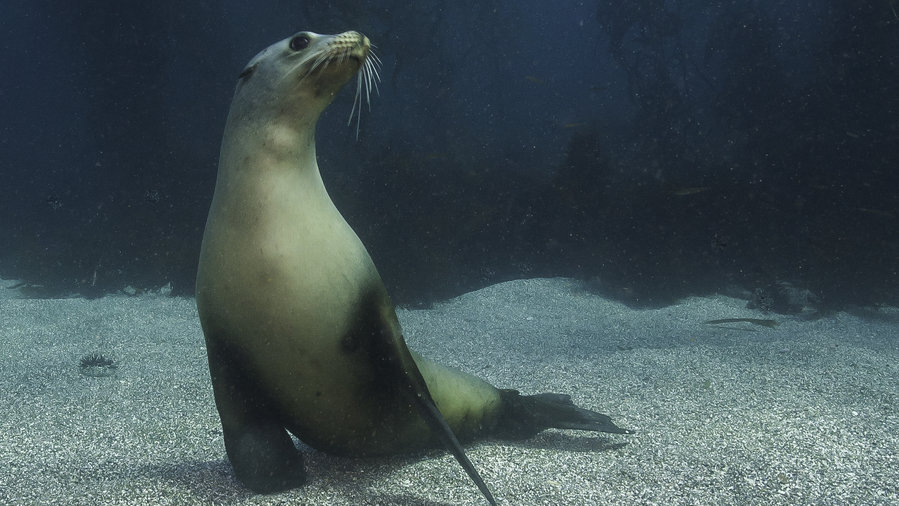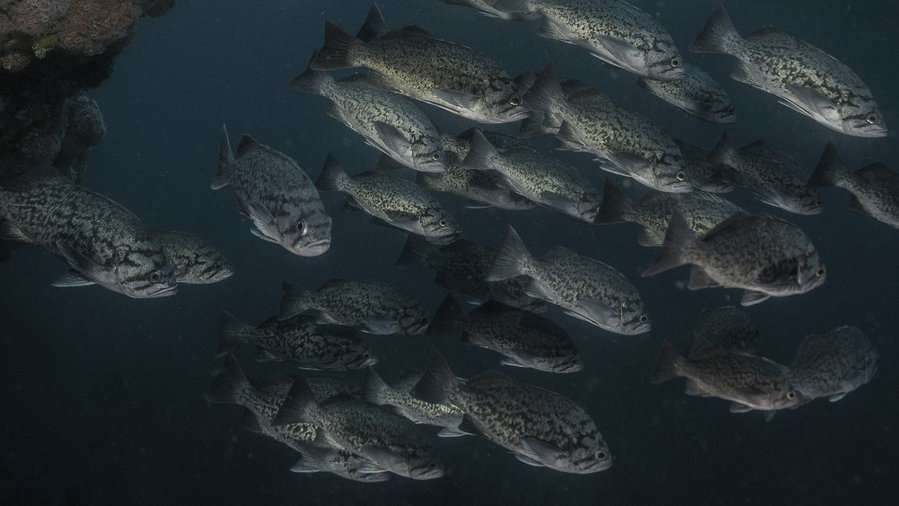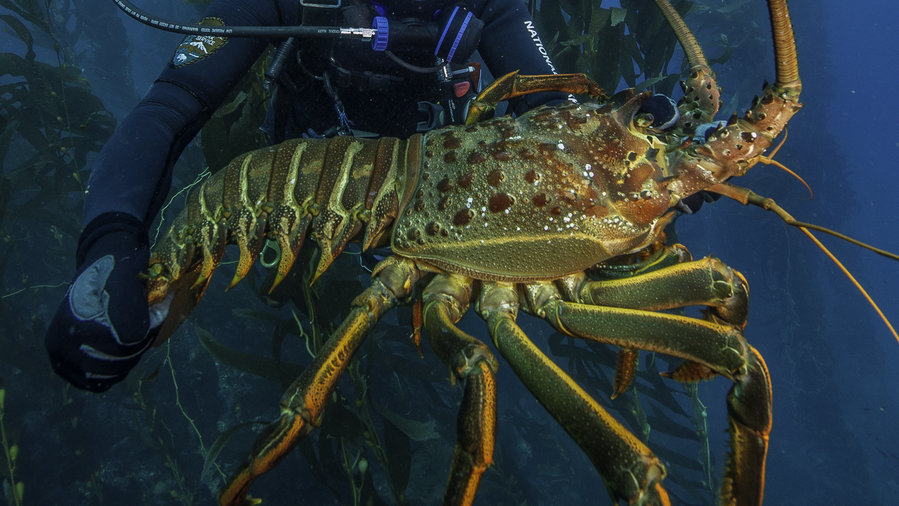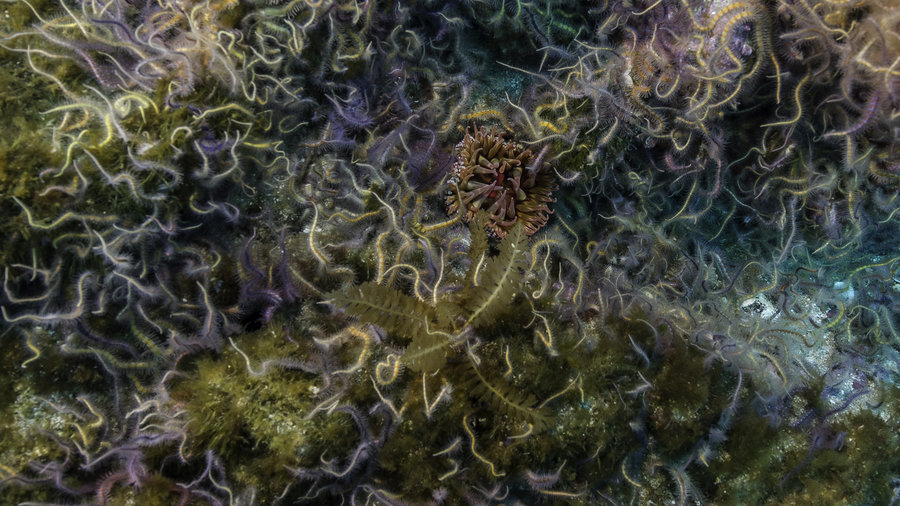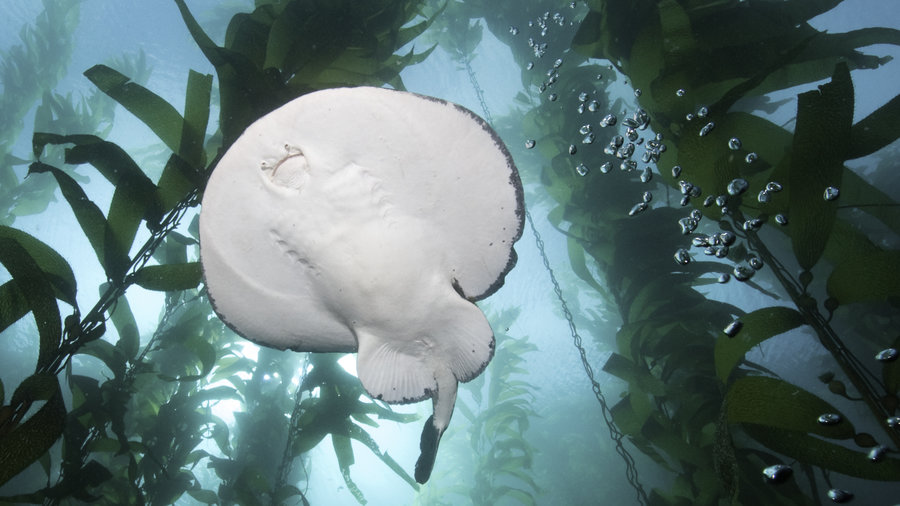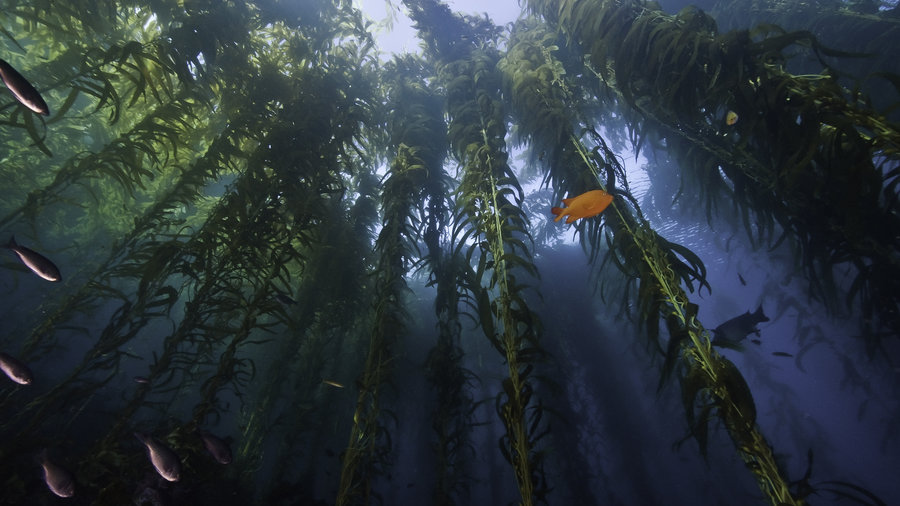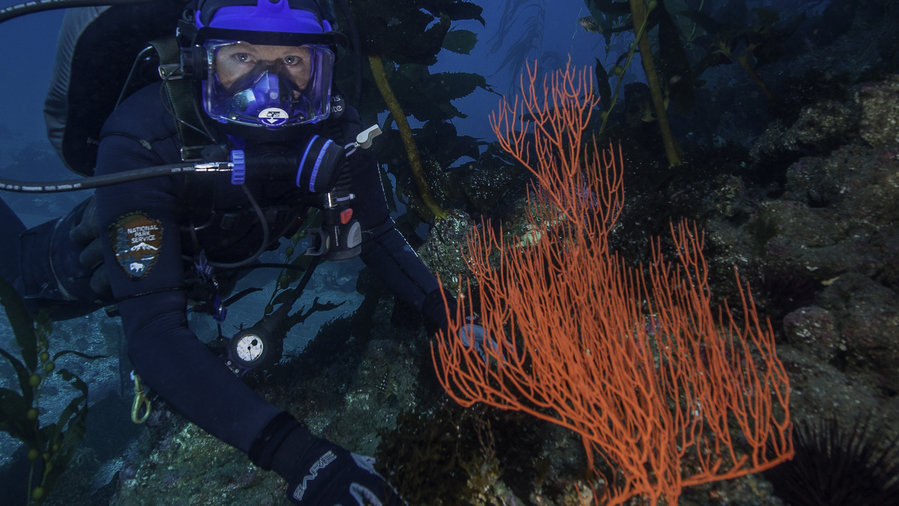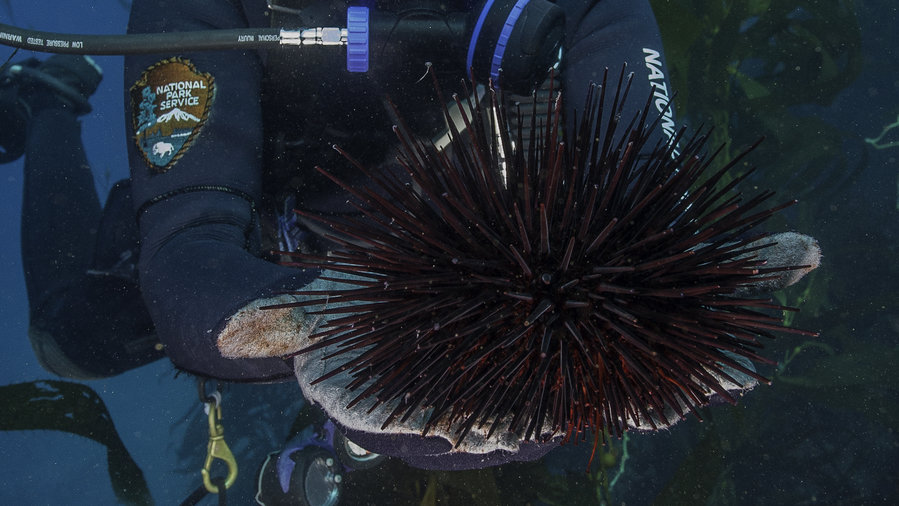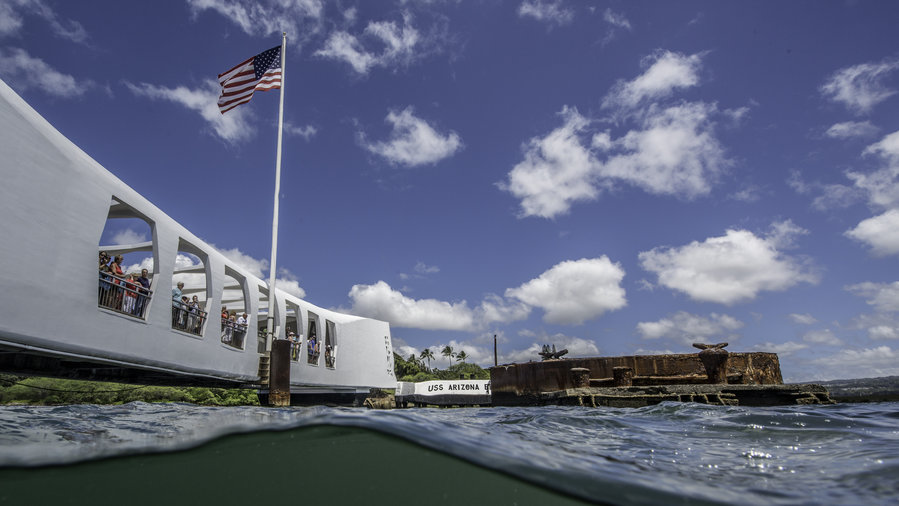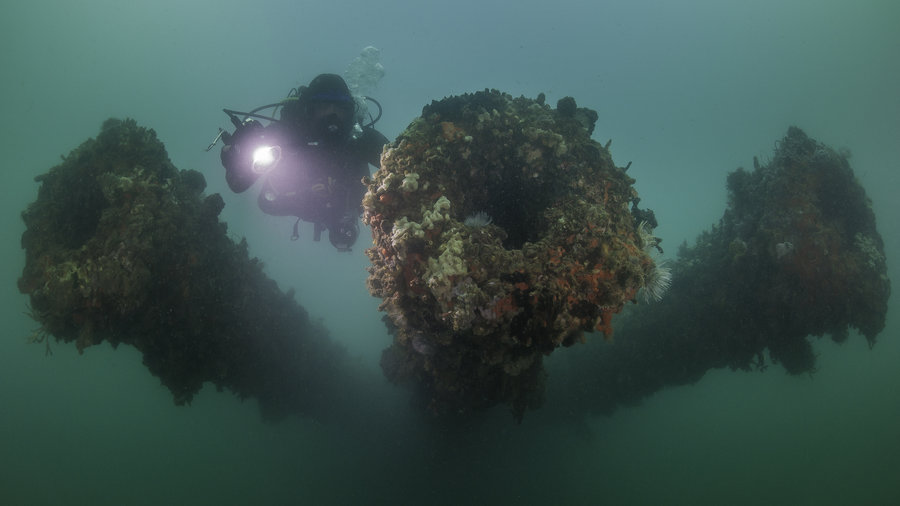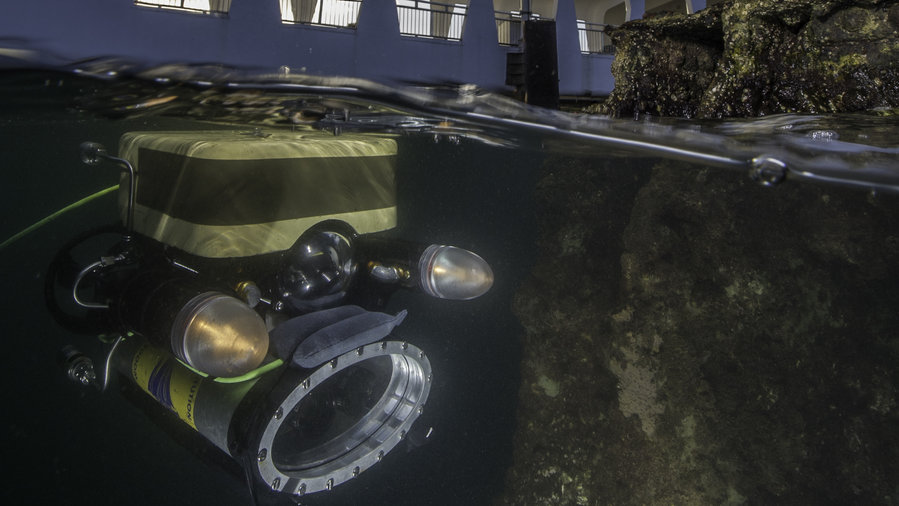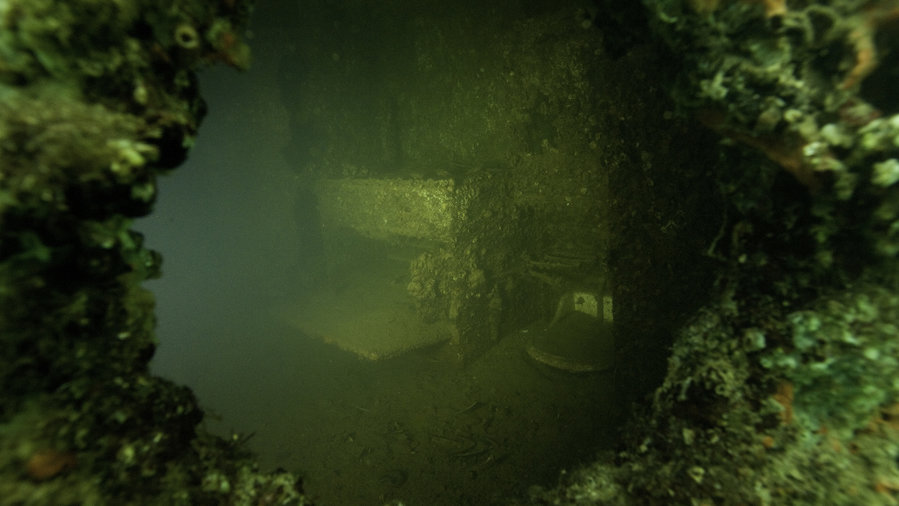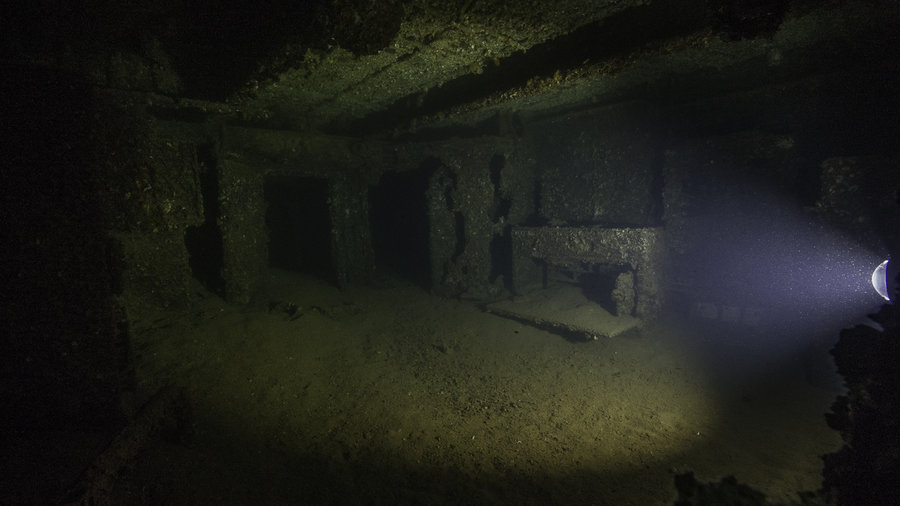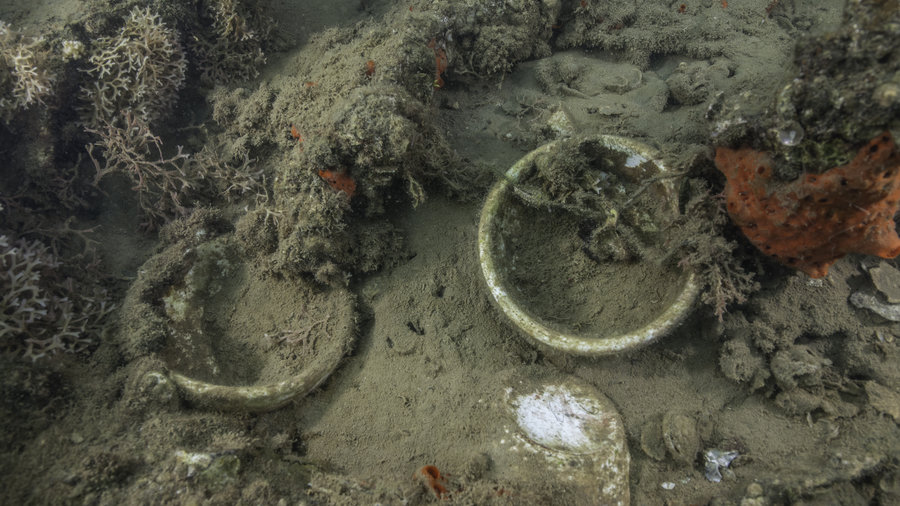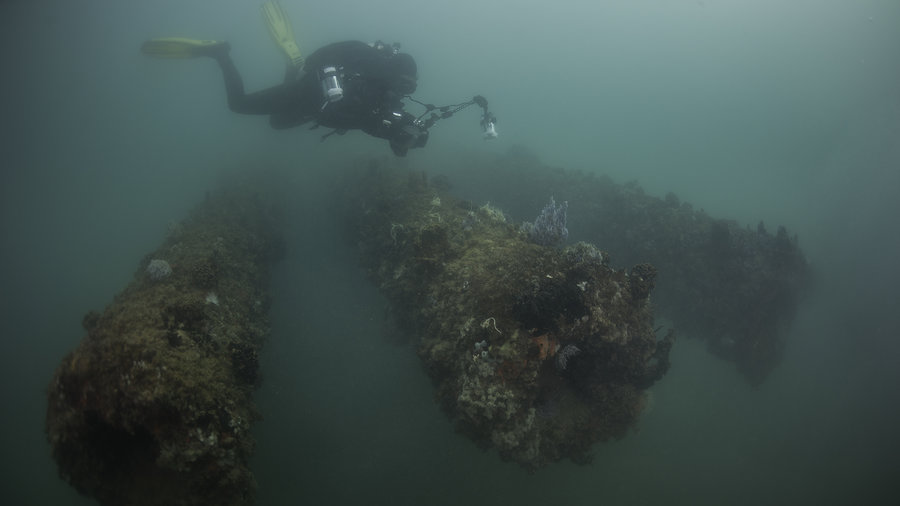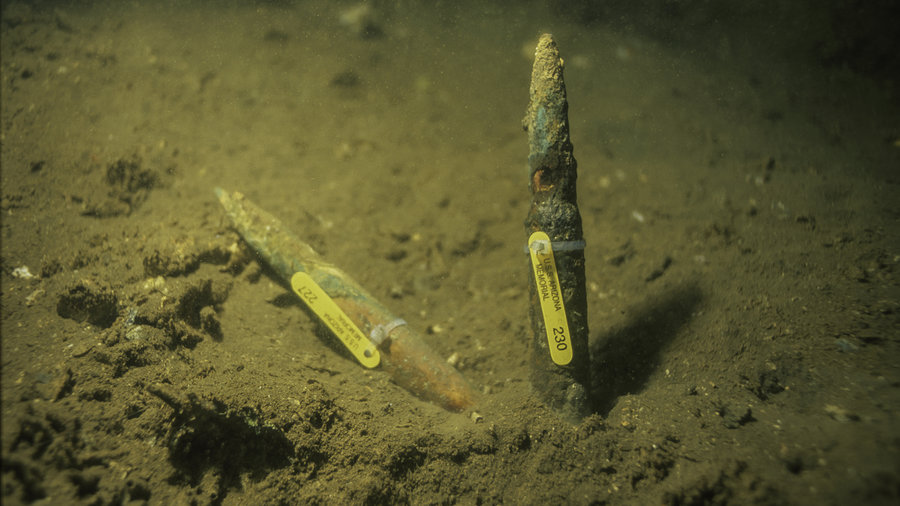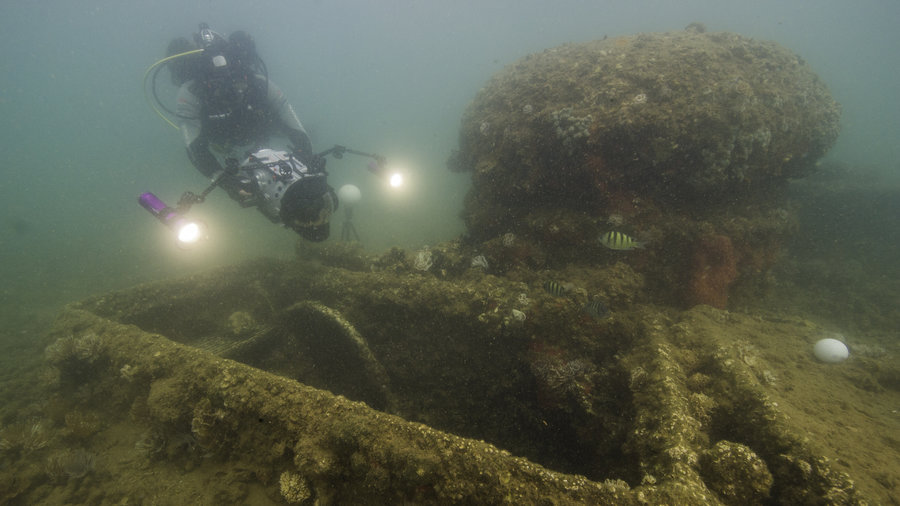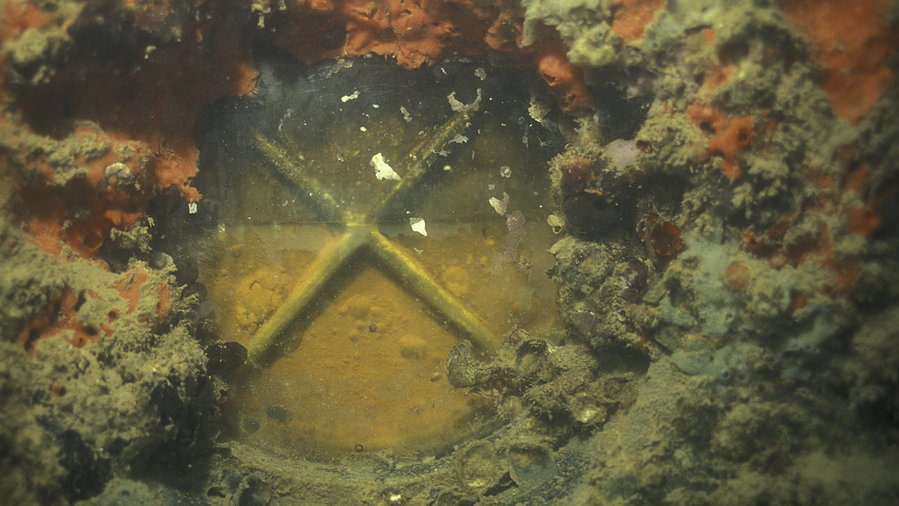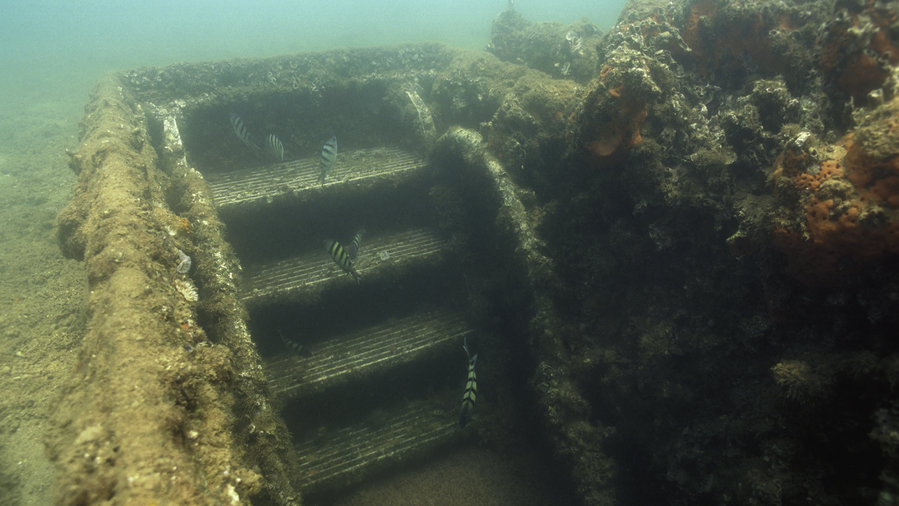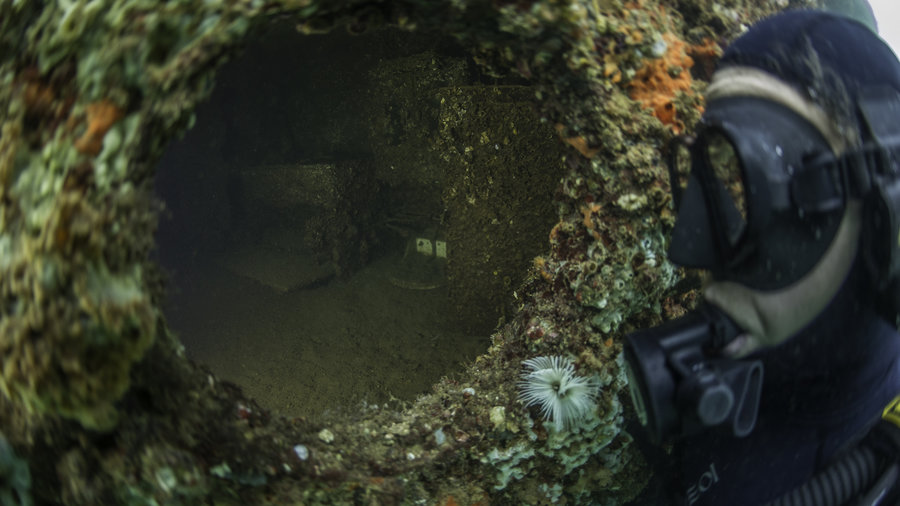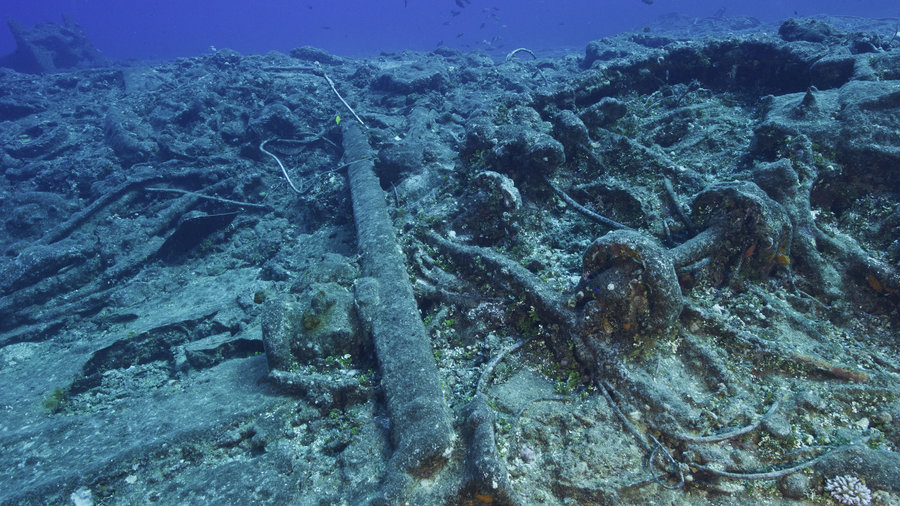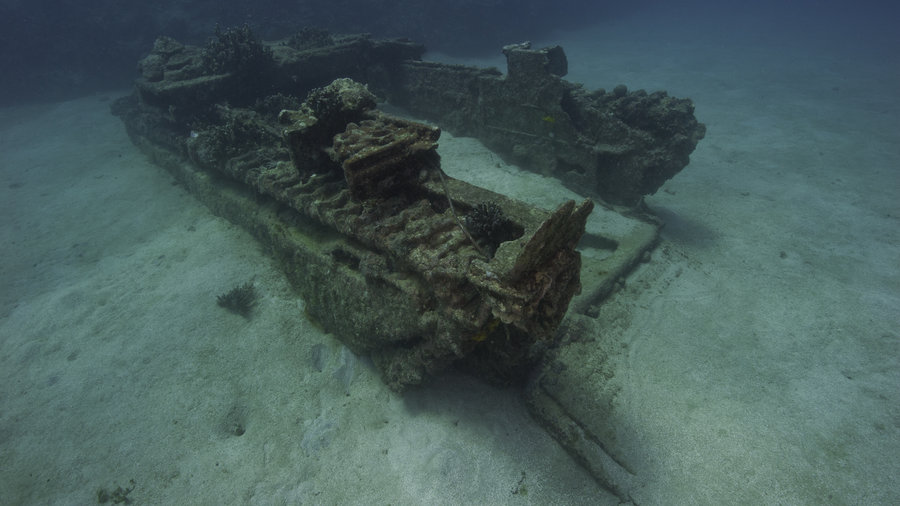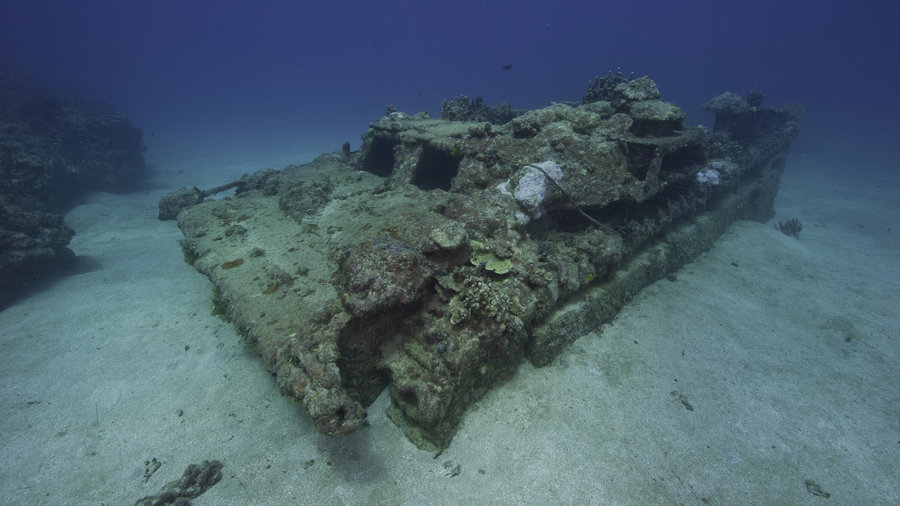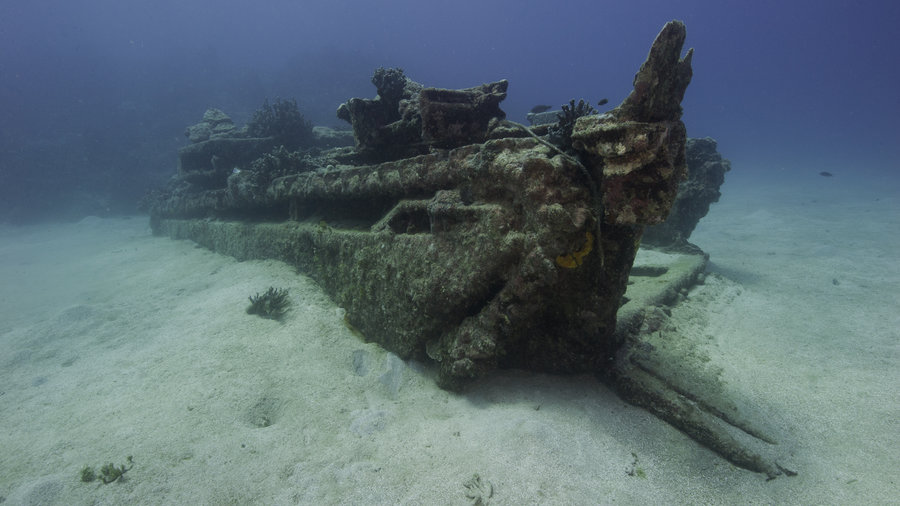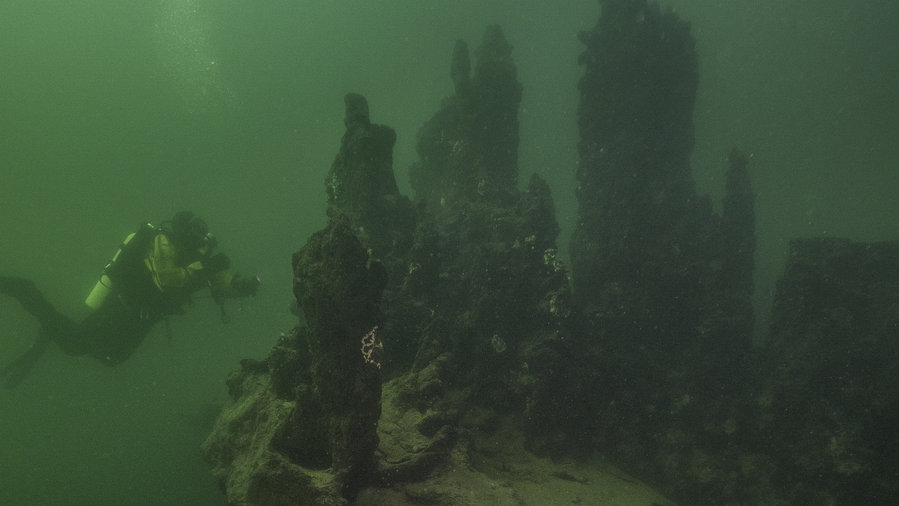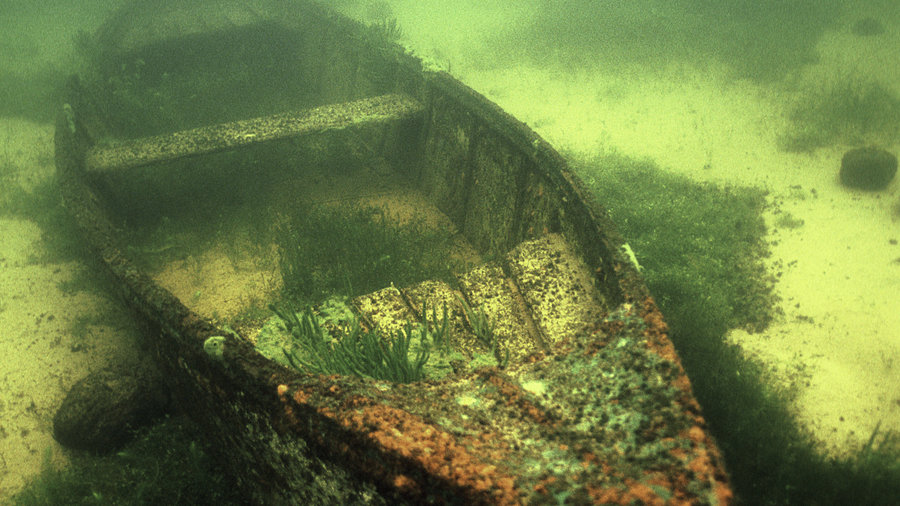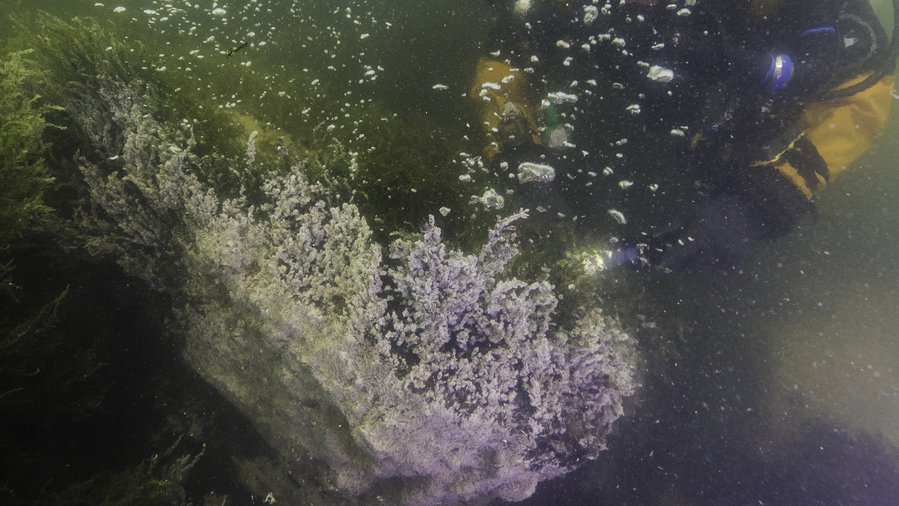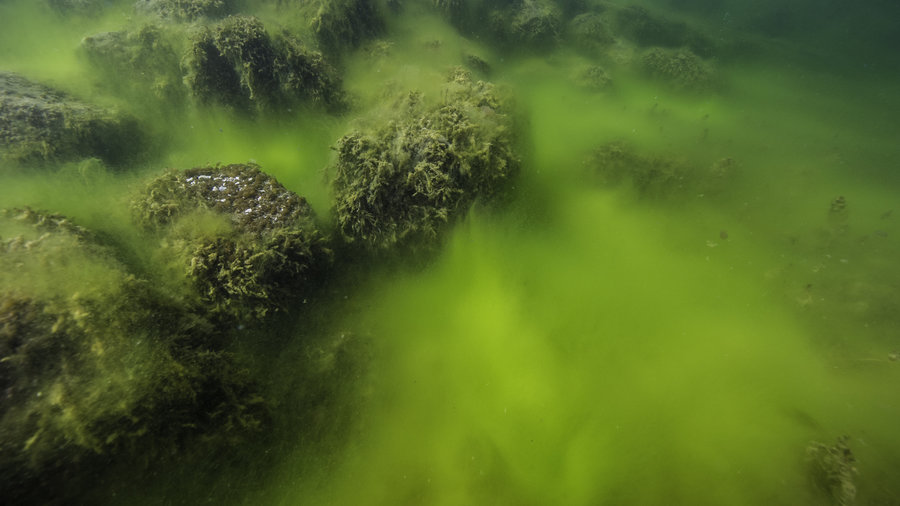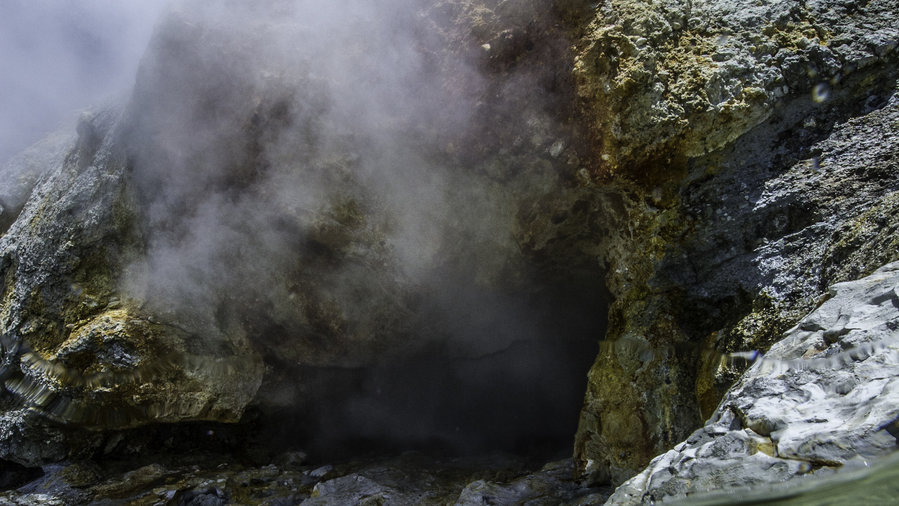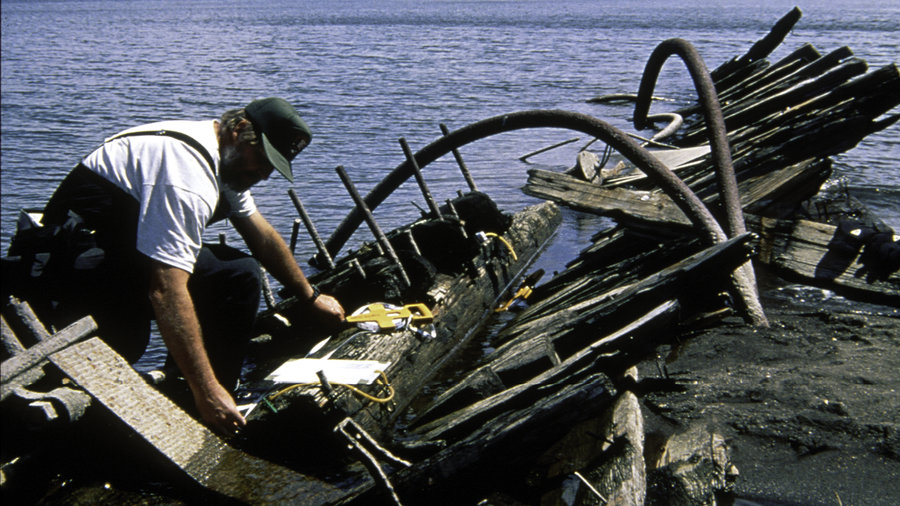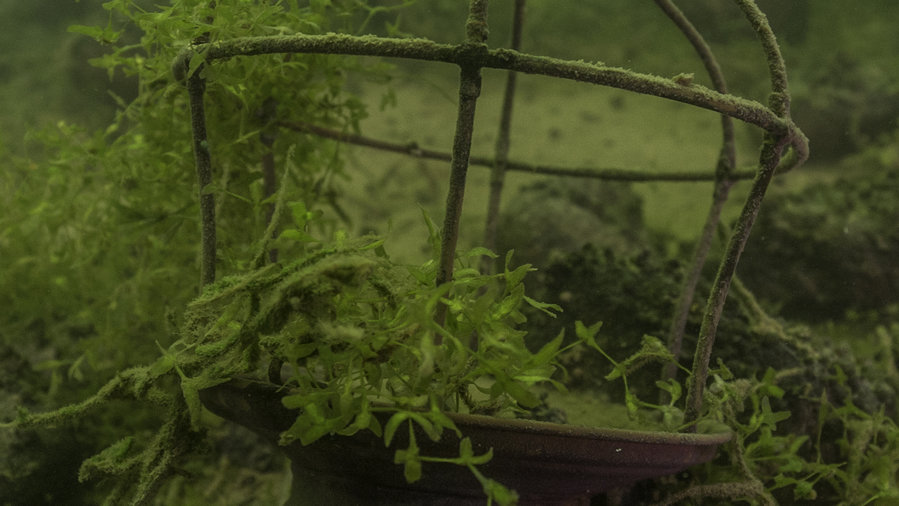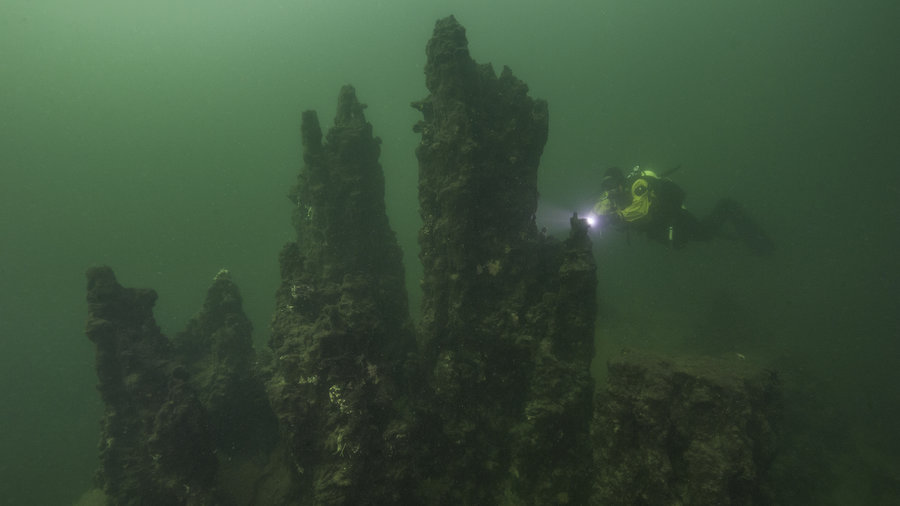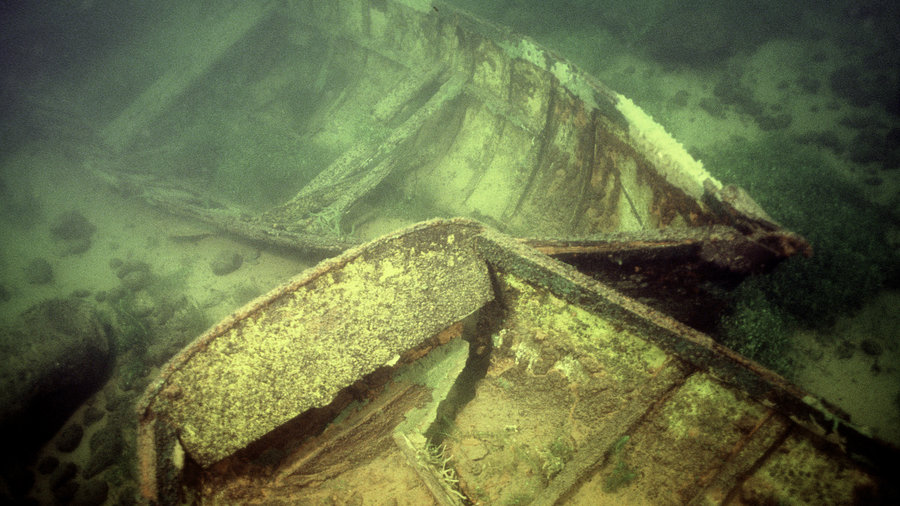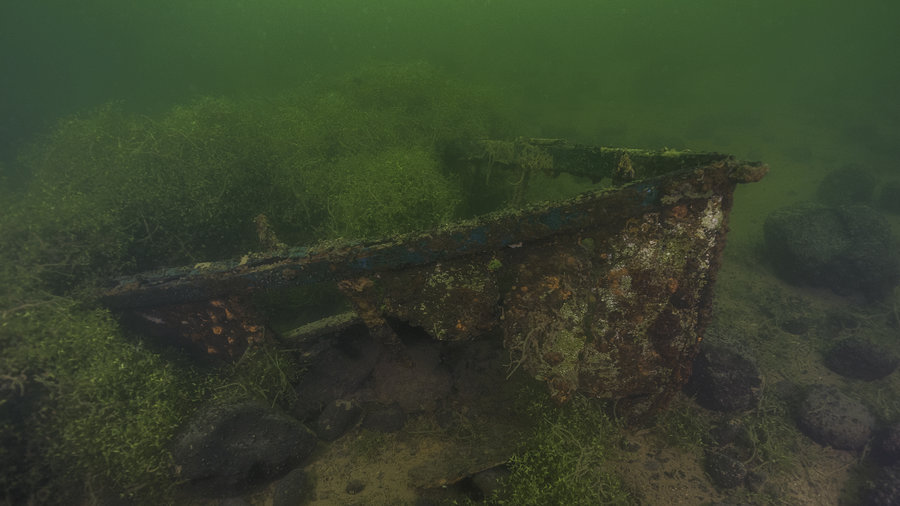Pelagophycus
A National Park Service diver explores the pelagophycus, or elk kelp, forests of Channel Islands National Park. Rock outcroppings host a diversity of life such as the bright red gorgonians.
Sea lions
A lone sea lion poses for his close-up in the kelp forest. Sea lions are often the most inquisitive and playful of Channel Islands National Park‘s marine life.
Rocky reefs
In Channel Islands National Park, the brilliant red gorgonians and sea stars take shelter on the rocky reef below the protection of the kelp forest.
School of blue
Blue rock fish school on the rocky outcropping often found beneath the surface of the Channel Islands‘ surrounding waters.
Large lobsters
A Channel Islands National Park diver showcases a large female spiny lobster as part of a live, underwater educational program called Channel Islands Live.
Sea of stars
At Channel Islands National Park, millions of brittle sea stars carpet the rocky bottom.
Torpedo ray
An electric torpedo ray descends in the kelp forest off Channel Islands National Park‘s Anacapa Island.
Climbing kelp
The magnificent kelp forest off of Channel Islands National Park‘s Anacapa Island.
Sea urchins
Channel Islands National Park Dive Officer Kelly Moore shows a black sea urchin during an educational program.
USS Arizona Memorial
The USS Arizona Memorial as seen from the water line. The exposed rust colored feature is a barbette, or foundation, where the battleship’s #3 guns once rested.
Battleship guns
NPS archeologist Bert Ho examines the 14-inch muzzles of the #1 guns of USS Arizona. Resting in 25 feet of water, these guns are the only remainining armament still on the USS Arizona.
ROV on the water
A prototype remotely operated vehicle, or ROV, operates near the exposed section of the USS Arizona with the memorial in the background.
Starboard porthole
An open porthole on USS Arizona’s starboard, or right side, allows examination of an officer’s cabin on the second deck of the battleship. Portions of a writing desk and sink are partially covered by 75 years of sediment build-up.
Lone light
A lone underwater light illuminates an officer’s cabin on the second deck of the USS Arizona, allowing an image to be captured from another open porthole. Divers never enter the ship out of respect for the nearly 1,000 sailors and marines still entombed within the hull.
Artifacts
Among the many artifacts still on the deck of the USS Arizona are ceramic bowls such as these, resting just outside the galley, or kitchen area, of the ship.
Inventory
Remaining artifacts on the USS Arizona have been tagged and inventoried by a National Park Service archeologist. These 50-caliber rounds are located near an ammunition locker and have been exposed by current or fish activity.
Hatch
National Park Service photographer Brett Seymour films over a hatch with stairs leading to the second deck of USS Arizona.
Ancient air
A USS Arizona porthole, with its interior blast cover closed, contains trapped air dating back to before the December 7, 1941 attack on Pearl Harbor.
Main deck
A hatch on the main deck of the USS Arizona with stairs that once lead below the officer’s cabin on the second deck now leads into 75 years of accumulated sediment.
View from the porthole
National Park Service diver Naomi Blinick peers inside an open porthole on the USS Arizona’s starboard, or right side, of the ship. Inside this officer’s cabin rest a white sink and writing desk nearly covered with sediment.
WWII artifacts
A U.S. military dump site off the steep cliffs of Guam hold several artifacts from WWII such as tanks, anchors, and vehicles.
Amphibious tractor
An assault amphibious tractor rests below 45 feet of water off the Agat section of the War in the Pacific National Historic Park. The vehicle was lost during the July 21, 1944 invasion of Guam.
Stern view
The stern view of the assault amphibious tractor located in War in the Pacific National Historic Park.
Deployed for landing
A front view of a military tractor with landing door deployed and visible tank-like treads rests below 45 feet of water in War in the Pacific National Historic Park off the island of Guam.
A dormant Yellowstone
A National Park Service diver explores 12,000-year-old dormant geothermal vents located in Yellowstone Lake.
Rowboat remains
A small rowboat from a rental fleet of the early 1900’s located below 25-30 feet of water just off the shore of the Lake Hotel at Yellowstone Lake.
Thermal release
A National Park Service diver examines the gaseous release of geothermal activity near Mary Bay in Lake Yellowstone.
An algae carpet
A vivid green algae covers the bottom of Lake Yellowstone in the West Thumb area.
Mapping the remains
National Park Service archeologist Jim Bradford maps the remains of the vessel EC Waters on Stevenson Island in Yellowstone Lake.
Exploring the lake
A National Park Service diver explores the uplifted 12,000-year-old dormant geothermal features in Yellowstone Lake.
Resting rowers
Two row boats from the early 1900’s rest on the bottom of Yellowstone Lake under 25-30 feet of water.
